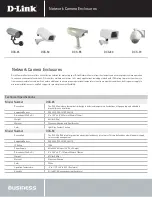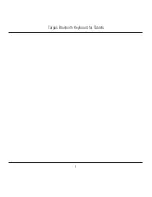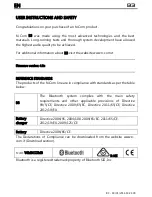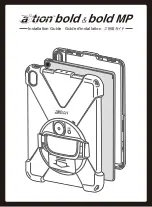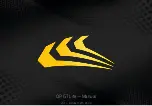
TIENet™ 360 LaserFlow™ Velocity Sensor
Section 2 Preparation and Installation
2-2
2.2 Sensor Installation
Considerations
Measurement accuracy can be affected by a number of site
factors that should be taken into consideration when selecting
the location for the sensor.
These factors may affect the laser velocity or the ultrasonic level,
or both.
If the laser velocimeter or ultrasonic transducer cannot obtain a
valid reading at any measurement point, an asterisk (*) will
appear next to the displayed reading, indicating there is an error.
2.2.1 Ultrasonic Beam Angle
The ultrasonic level transducer has a 10° beam angle (5° from
center line), forming a cone in which the apex is the transducer.
The transducer can only detect surfaces within this cone.
Figure 2-1 Ultrasonic level sensor beam angle
The ultrasonic beam narrows as elevation decreases, which can
increase difficulty in detecting the return echo. Narrow channels
can result in false echoes and incorrect level readings from the
walls and sides of the channel.
The beam widens as elevation increases. If the beam is too wide,
the sensor may pick up signals from unwanted surfaces, such as
the walls of the channel.
2.2.2 High Water Levels
In most open channel installations where the level may exceed
one-half of the full pipe, mount the sensor as near as possible to
the midpoint between the entrance and exit to measure over the
least turbulent flow.
2.2.3 Submersion and
Fouling
Fouling by grease or solids can cause the LaserFlow sensor to
malfunction. The LaserFlow is sealed, so unless it is exposed to
corrosive substances, submersion of 2 meters, up to 72 hours will
not harm it. Upon retrieval, ensure that the surfaces of the laser
window and ultrasonic sensor are clean.
Cleaning instructions are provided in Section 5.
2.2.4 Humidity
Conditions of extremely high or low humidity can cause ultra-
sonic level detection to occur either earlier or later than normal
conditions. A drop in water level, normally compensated for by
the sensor’s interval-based amplifier, may produce errors in echo
detection.
10°
5°
Summary of Contents for TIENet 360 LaserFlow Ex
Page 2: ......
Page 4: ......
Page 10: ...TIENet 360 LaserFlow Velocity Sensor Safety viii ...
Page 54: ...TIENet 360 LaserFlow Velocity Sensor Section 2 Preparation and Installation 2 32 ...
Page 90: ...TIENet 360 LaserFlow Velocity Sensor Section 4 Setup with 2160 LaserFlow Module 4 20 ...
Page 102: ...TIENet 360 LaserFlow Velocity Sensor Appendix A Replacement Parts A 2 A 2 LaserFlow Sensor ...
Page 103: ...TIENet 360 LaserFlow Velocity Sensor Appendix A Replacement Parts A 3 ...
Page 104: ...TIENet 360 LaserFlow Velocity Sensor Appendix A Replacement Parts A 4 ...
Page 105: ...TIENet 360 LaserFlow Velocity Sensor Appendix A Replacement Parts A 5 ...
Page 106: ...TIENet 360 LaserFlow Velocity Sensor Appendix A Replacement Parts A 6 ...
Page 107: ...TIENet 360 LaserFlow Velocity Sensor Appendix A Replacement Parts A 7 ...
Page 109: ...TIENet 360 LaserFlow Velocity Sensor Appendix A Replacement Parts A 9 ...
Page 111: ...TIENet 360 LaserFlow Velocity Sensor Appendix A Replacement Parts A 11 ...
Page 132: ...TIENet 360 LaserFlow Velocity Sensor D 6 ...
Page 136: ......
Page 138: ...Warranty ...
Page 140: ......































